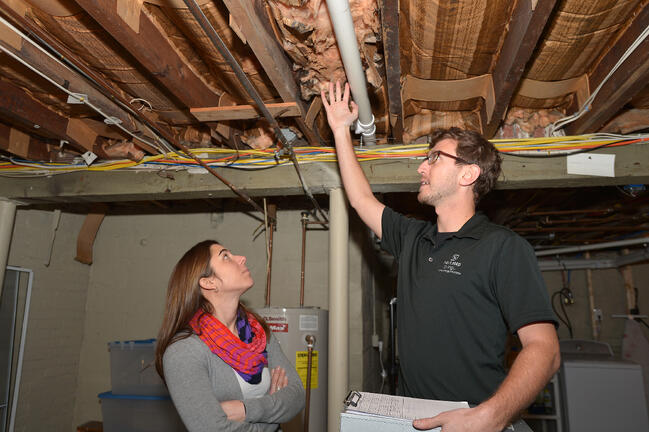The U.S. Environmental Protection Agency’s (EPA’s) plan to regulate carbon emissions is just the latest challenge facing the U.S. electric power system. Technological innovation is disrupting old ways of doing business and accelerating grid modernization. Earlier this year, AEE released Advanced Energy Technologies for Greenhouse Gas Reduction, a report detailing the use, application, and benefits of 40 specific advanced energy technologies and services. This post is one in a series drawn from the technology profiles within that report.

Residential energy efficiency improvements include a number of technologies and building systems that reduce energy use in homes, while still delivering the same or superior service. This includes efficient consumption of energy in appliances and other devices (e.g., lighting, Energy Star TVs, computers and refrigerators), and efficient heating and cooling equipment (e.g., natural gas condensing boilers, heat pump water heaters, and high-efficiency air conditioners). It also includes application of various building materials and systems that reduce energy demand, including efficient windows, wall and attic insulation, air sealing, building controls (e.g., programmable thermostats, use of heating and cooling zones, smart appliances that respond to price and demand signals), wrapping of hot water/steam pipes with insulation, smart power strips that shut off devices to avoid standby losses, and alternatives to air conditioning such as whole-house fans. Some water-saving technologies (e.g., faucet aerators, low-flow showerheads, efficient dishwashers) also reduce energy used for water heating.
Average energy consumption per U.S. home has decreased over time, reducing 21% from 1980 to 2009. Still, there remains a large stock of residential buildings with significant untapped potential for retrofitting with efficient technologies and systems. The implementation of residential sector efficiency varies greatly across the country, driven by the uneven adoption of energy efficient building codes, differences in energy prices, and state policies to promote residential efficiency (typically through utility-sponsored or administered programs). The U.S. market for residential energy efficiency home services was an estimated $855 million in 2013, up 13% from 2012.[1]
The economic payback for efficiency measures varies considerably. Efficient lighting can have paybacks of as little as one to two years. Other more expensive items, including HVAC systems, wall/attic insulation, and windows typically have longer paybacks but also result in larger total energy savings. In many cases, the choice of what measures to implement, based on achieving a suitable payback, is determined with an energy audit. In states with comprehensive residential efficiency programs, these audits are typically free of charge to the homeowner, and rebates are usually available for qualifying measures to encourage adoption.
Strict building energy codes and appliance standards can save the consumer 30% to 40% compared with normal practices/ products. Energy Star products can offer up to 75% energy savings compared to standard products. With commercial and residential electricity consumption making up 35% of U.S. greenhouse gas emissions, full implementation of cost-effective efficiency measures has the potential to reduce these emissions significantly, while also saving money for consumers
[1] Advanced Energy Now 2014 Market Report, http://info.aee.net/advanced-energy-now-2014-market-report
